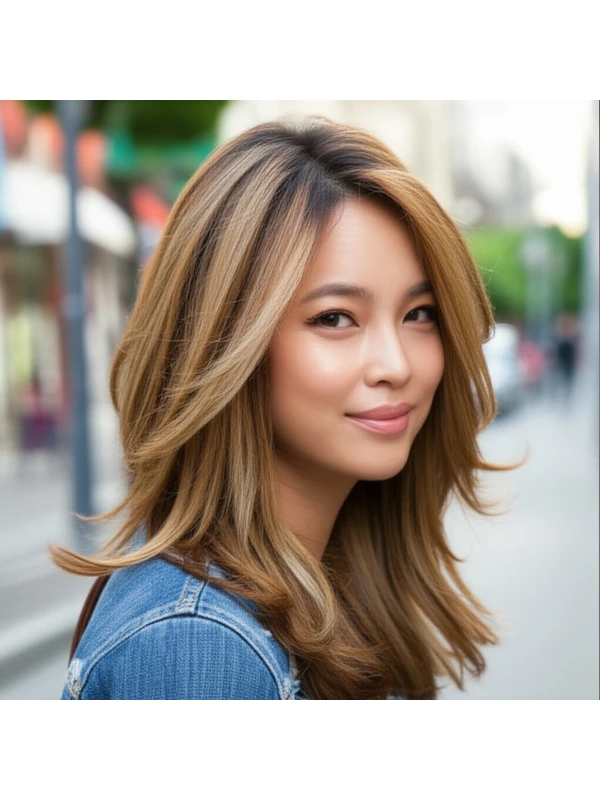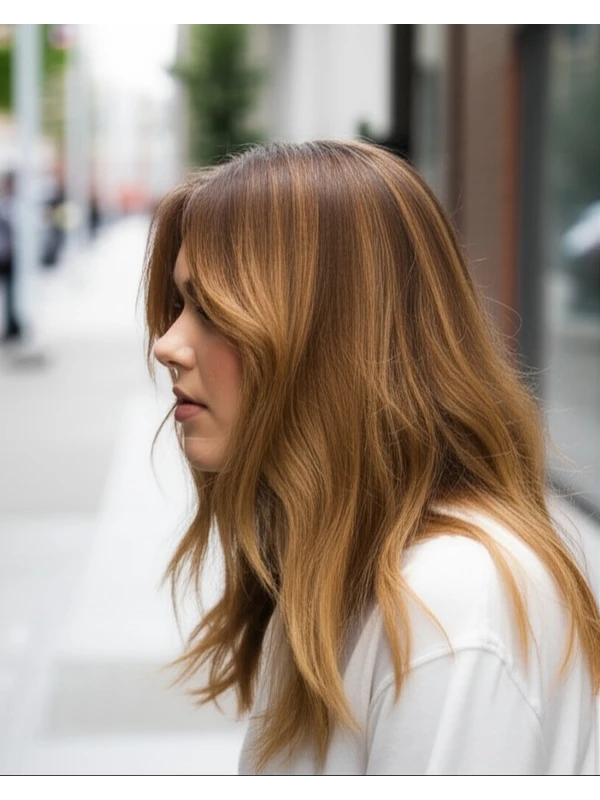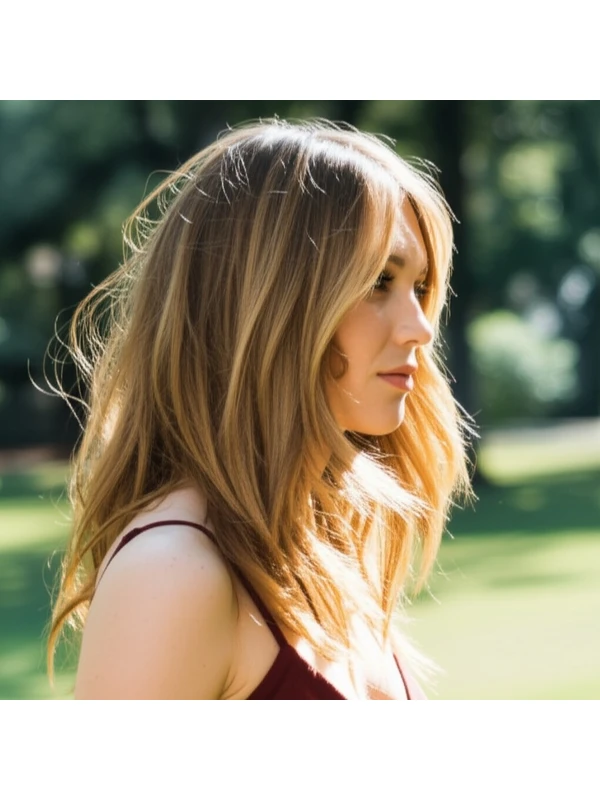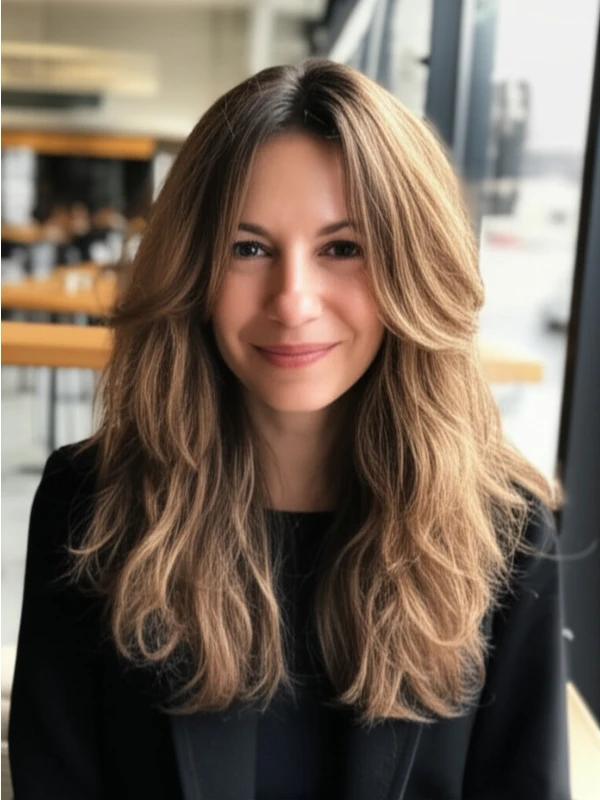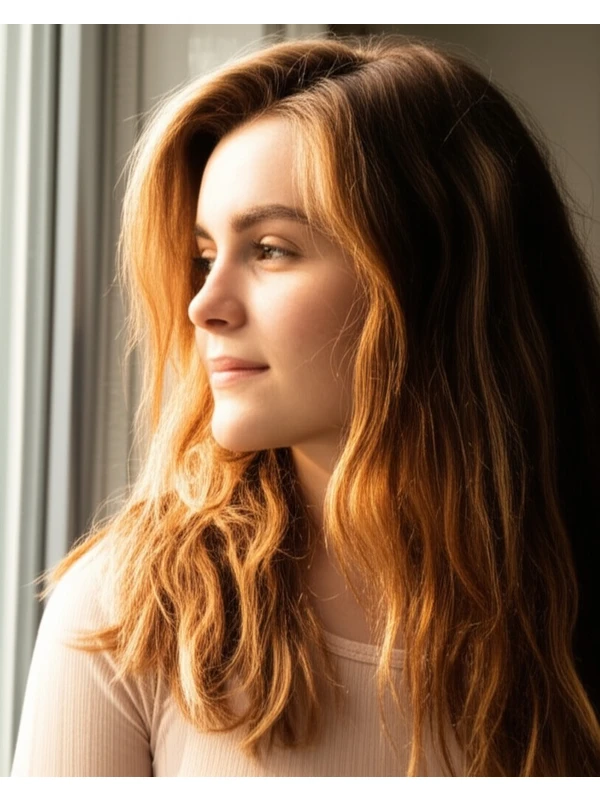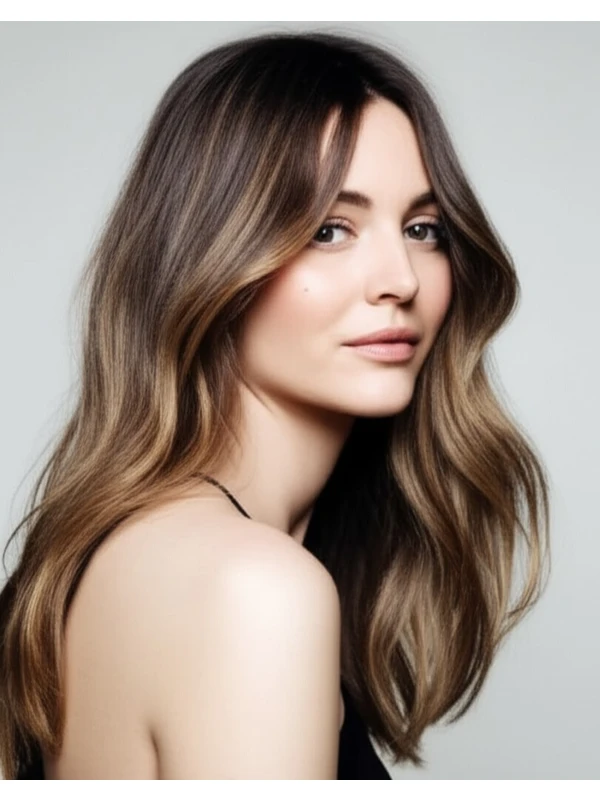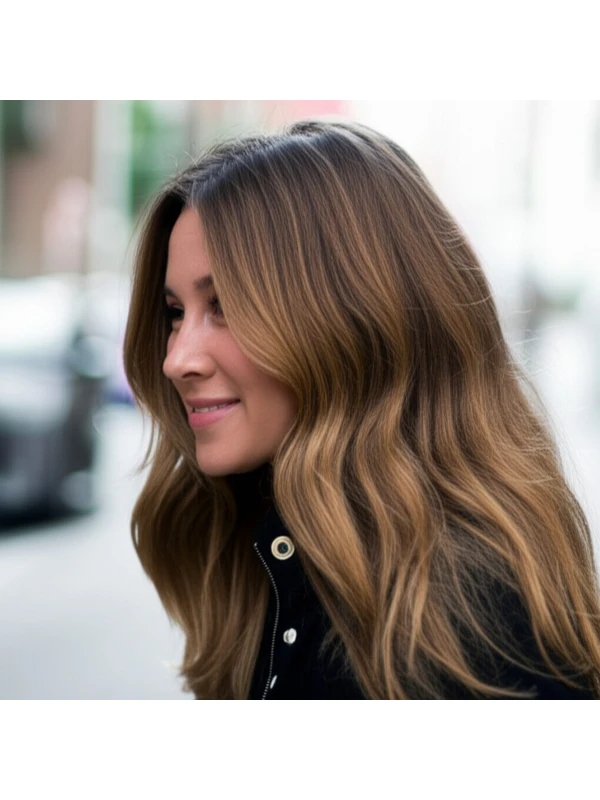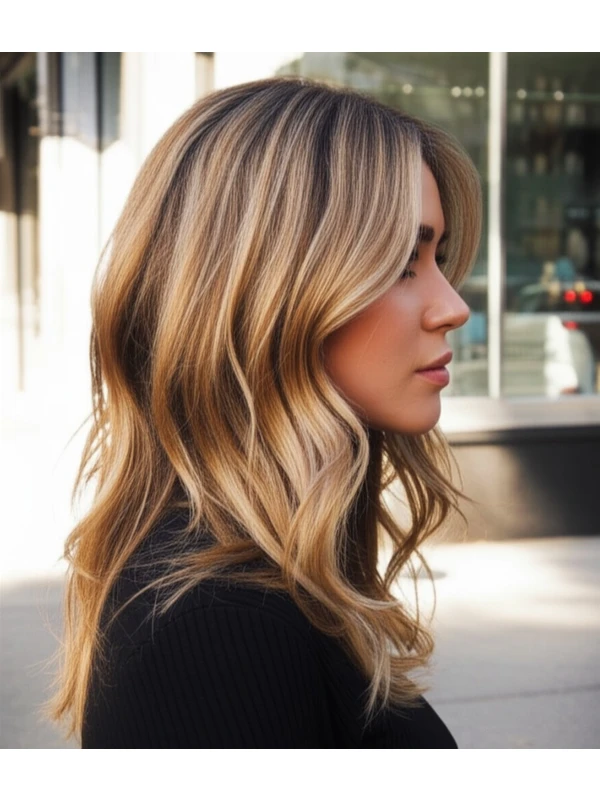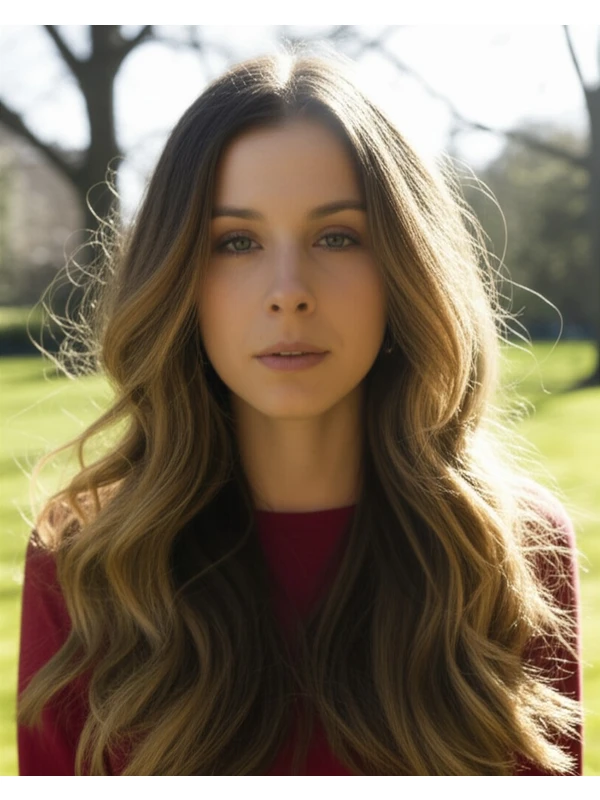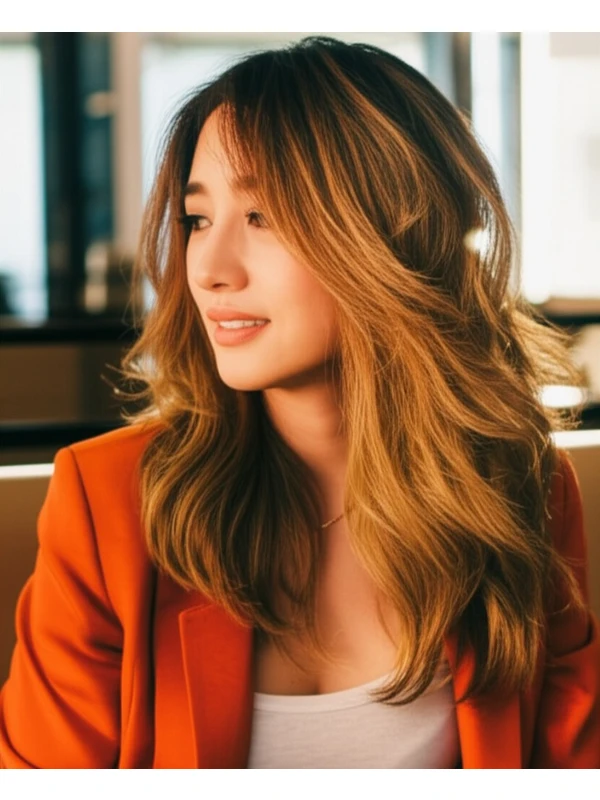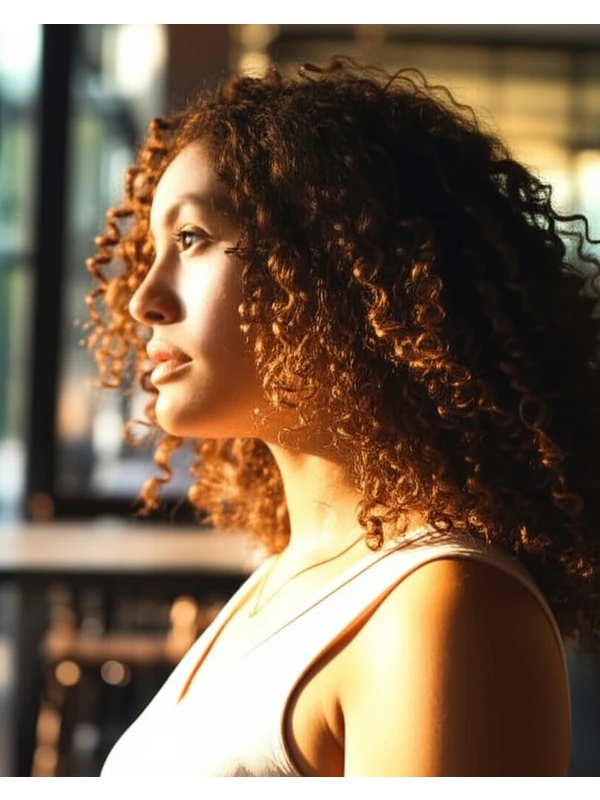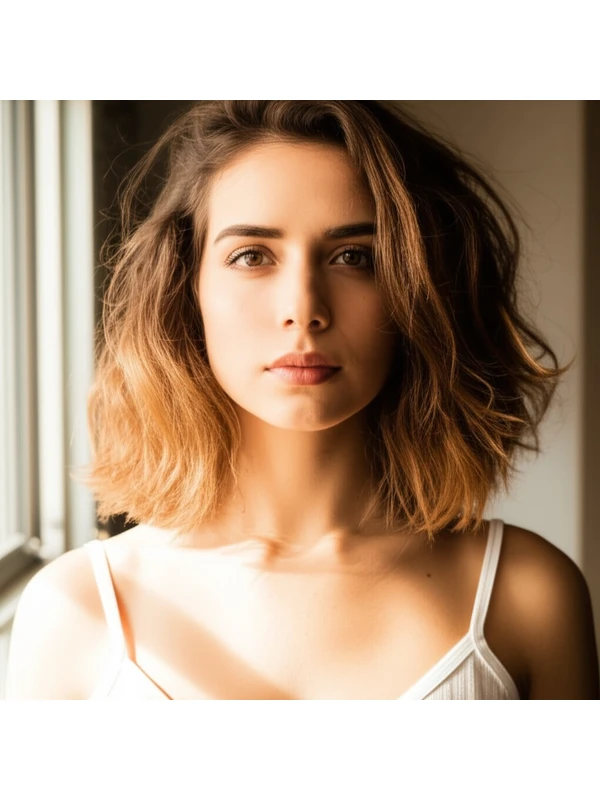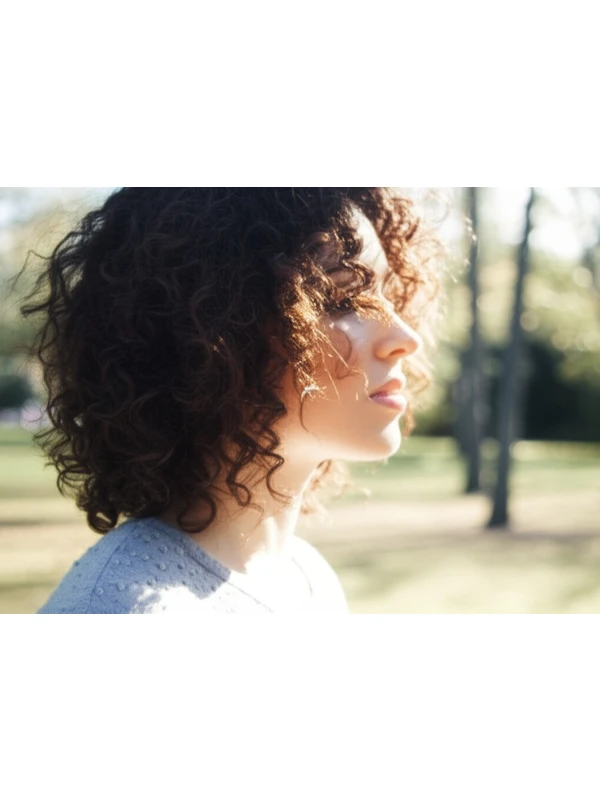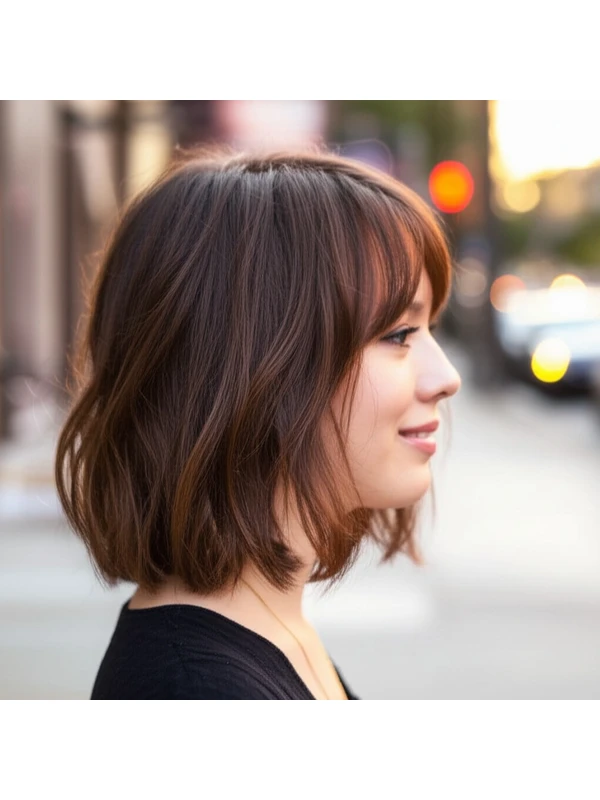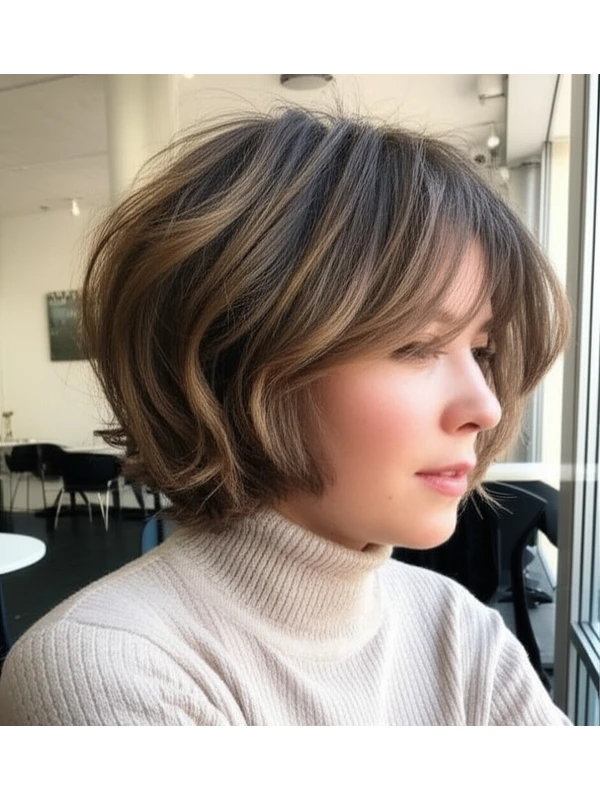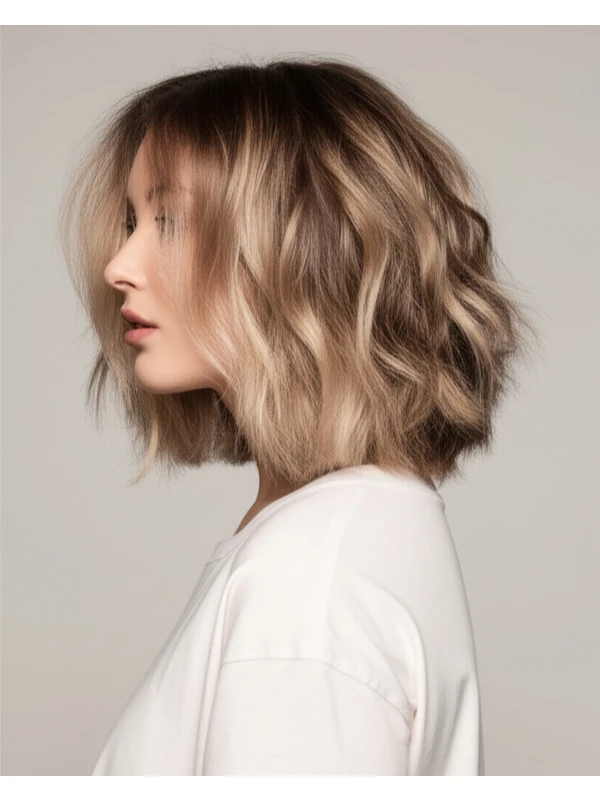#Long Layers: A Guide to Effortless Movement & Dimension
Long layers are a timeless hairstyle celebrated for their versatility and ability to flatter almost anyone. But what exactly are long layers? This guide breaks down everything you need to know, from face shape suitability to styling secrets, so you can confidently discuss this popular style with your stylist.
#1) Background & Definition: Understanding the Cut
Long layers involve cutting lengths throughout hair that’s already quite long (typically past the collarbone). It's not just one length; instead, it creates a graduated effect where sections of hair are shorter than others. This difference in length adds movement, volume, and visual interest.
- Geometry: The shortest layer usually starts around the chin or slightly below, gradually lengthening towards the ends. The degree of layering (how much shorter each section is) determines the overall look – subtle layers create soft movement, while more dramatic layers add significant volume.
- Key Features: Movement, dimension, softness, flattering to many face shapes.
- Typical Length Ranges: Hair needs to be at least collarbone length for long layers to truly show their effect; ideally past the shoulders or longer.
- Alternative Names: Layered hair, graduated cut (though this can encompass shorter lengths too), soft layers.
#2) Face Shape Fit: Finding Your Angle
Long layers are incredibly adaptable but understanding how they interact with your face shape is key to a truly flattering result.
- Oval Faces: Lucky you! Long layers look fantastic on oval faces because the balanced proportions allow for maximum versatility. Layers can be placed strategically around the cheekbones and jawline to enhance natural features. Fringe Options: Side-swept bangs or curtain bangs soften angles further.
- Round Faces: Long layers help elongate a round face by drawing the eye downwards. Focus on layers that start below the chin – too much layering at the cheeks can accentuate roundness. Avoid blunt, one-length cuts. Fringe Options: Wispy side-swept bangs or long, soft curtain bangs are ideal for slimming.
- Square Faces: Long layers soften a square jawline and add fluidity to angular features. Layers around the temples help break up the strong lines of the face. Fringe Options: Soft, textured fringe can further soften angles; avoid blunt, straight-across fringes.
- Heart Faces: Layers balance a wider forehead and narrower chin. Face-framing layers starting at or slightly below the cheekbones are particularly flattering. Fringe Options: Side-swept bangs help to create asymmetry and draw attention away from the forehead.
- Diamond Faces: Similar to heart faces, long layers soften diamond shapes by adding balance. Layers around the chin area can add fullness. Fringe Options: Longer, side-swept fringe or curtain bangs work well.
- Oblong (Long) Faces: While long layers are generally flattering, be mindful of layering too heavily at the ends as this can visually elongate the face further. Focus on volume around the crown to create a more balanced silhouette. Fringe Options: A blunt, straight-across fringe or heavy curtain bangs can help shorten an oblong face.
#3) Body Proportions & Height Guidance: Considering Your Silhouette
Beyond your face shape, your overall body proportions and height play a role in how long layers look best.
- Petite (Under 5’4”): Avoid overly dramatic layering that could overwhelm a smaller frame. Layers starting lower on the head create more length visually.
- Average Height (5’4”-5’9”): You have the most flexibility! Experiment with different layer placements to find what suits you best.
- Tall (Over 5’9”): Long layers enhance a taller frame, adding movement and visual interest. More dramatic layering can create even more volume.
- Narrow Shoulders: Layers that add width around the face and shoulders will balance your silhouette.
- Broad Shoulders: Avoid overly voluminous layers at the shoulder line as this can accentuate broadness. Focus on layers that draw attention upwards.
- Short Neck: Layers starting below the chin create the illusion of a longer neck. Avoid very short, blunt layers around the jawline.
- Long Neck: Face-framing layers and shorter layers around the face add visual width to balance a long neck.
#4) Works Best With Hair Types & Densities: Tailoring to Your Texture
The success of long layers depends on your hair’s texture and density.
- Straight Hair: Long layers create beautiful movement, but can sometimes look limp without proper styling. Consider internal layering (hidden layers within the cut) for added volume.
- Wavy Hair: Layers enhance natural waves, creating more definition and bounce. Be mindful of over-layering which can lead to frizz.
- Curly Hair: Long layers add shape and prevent a "triangle" effect common with curly hair. The degree of layering depends on curl pattern – tighter curls need less layering. Shrinkage Note: Curly and coily hair shrinks significantly when dry, so your stylist needs to account for this during the cut.
- Coily Hair: Long layers can add definition and prevent a bulky look. Ensure the layers are strategically placed to allow for natural coil formation. Shrinkage Note: Significant shrinkage is crucial to consider – communicate clearly with your stylist about desired length after shrinkage.
- Fine Hair: Layers create the illusion of volume, but too many layers can make hair appear thinner. Focus on face-framing layers and subtle layering throughout.
- Medium Hair: Long layers work well for medium density hair; you have a good balance of volume and manageability.
- Thick Hair: Long layers are essential to remove weight and create movement in thick hair. More dramatic layering may be needed.
#5) Styling Variations: From Casual to Evening Glam
The beauty of long layers lies in their versatility.
- Sleek vs Textured: Sleek styles require a smoothing serum or oil, while textured looks benefit from texturizing spray or mousse.
- Middle vs Side Part: A middle part creates symmetry and balance; a side part adds softness and volume.
- Fringe Variations: Blunt bangs, wispy bangs, curtain bangs – each alters the overall look significantly.
- Occasion Styling:
- Casual: Air-dried with minimal product for effortless movement.
- Office: Sleeked down with a serum and styled away from the face.
- Evening: Add volume at the roots using mousse or volumizing spray, curled or waved for added drama.
#6) Maintenance: Keeping Your Layers Looking Fresh
Regular trims are essential to maintain shape and prevent split ends.
- Trim Cadence: Every 8-12 weeks (approximately).
- At-Home Routine: Gentle shampoo & conditioner; weekly deep conditioning treatment, especially for dry or damaged hair.
- Heat vs Air-Dry: Minimize heat styling whenever possible. When using heat, always apply a heat protectant.
- Product Checklist: Shampoo/Conditioner (suited to your hair type), Leave-in Conditioner (for moisture and detangling), Styling Cream/Mousse (for texture or volume), Finishing Serum/Oil (to smooth frizz).
- Estimated Daily Styling Time: 10-30 minutes, depending on desired style.
#7) Grow-Out Roadmap: Evolving with Your Hair
Long layers evolve as your hair grows.
- Months 1-3: The shape is most defined and requires regular trims to maintain the layered effect.
- Months 3-6: Layers begin to blend together, softening the overall look. Consider a “dusting” – trimming just the ends without altering the layers significantly.
- Maintaining Shape: Communicate with your stylist about how you’re styling your hair at home so they can adjust the cut accordingly during maintenance trims.
#8) Color Pairings: Enhancing Dimension & Depth
Color and long layers are a match made in heaven!
- Shades that Elevate: Balayage, highlights, or lowlights add dimension and movement to layered hair.
- Cool Undertones: Ashy blondes, cool browns, silver tones.
- Warm Undertones: Honey blondes, caramel browns, copper hues.
- Low-Commitment Options: Root smudging (blending the root color with the underlying natural shade) or gloss treatments to enhance shine and tone.
#9) Season & Occasion Guide: Adapting Your Style
- Spring/Summer: Embrace lighter textures – air dry, use sea salt spray for beachy waves.
- Fall/Winter: Add warmth with richer tones and deeper layers; consider a more polished look with a smoothing serum.
- Work: Keep it professional—sleek styling or soft waves.
- Weddings: Romantic curls or waves enhance the feminine feel of long layers.
- Parties: Experiment with bolder styles – textured updos, dramatic side-swept bangs.
#10) Cost & Time: What to Expect at the Salon
- Salon Time: Typically 1.5 - 2.5 hours (can vary depending on hair thickness and desired styling).
- Estimated Price Range: Relatively higher than a simple trim, but generally mid-range; expect slightly more for color services if combined with the cut.
#11) Pros & Cons: Weighing Your Options
Pros: Versatile, flattering to many face shapes, adds movement and dimension, easy to style (depending on desired look). Cons: Requires regular trims, can sometimes make fine hair appear thinner, styling time can vary depending on the desired look.
#12) Salon Consultation Script: Questions to Ask Your Stylist
- "I'm interested in long layers. Can you assess my face shape and determine if this style will be flattering?"
- "What degree of layering would work best for my hair type and density?"
- “Can we discuss how the length of the layers will affect my overall silhouette?”
- "How can I maintain the shape between cuts at home?"
- "Could you show me examples of long layers on someone with similar hair characteristics to mine?"
#FAQs
- Will long layers make my hair look thinner? Not necessarily! Strategic layering can actually create the illusion of volume, especially for fine hair. However, too many layers can make thin hair appear even finer.
- How much will my hair length change after getting long layers? It depends on how much is layered; typically a few inches are removed overall, but this varies greatly depending on your starting length and desired look.
- Can I get long layers if I have very short hair? Not really. Long layers require a significant amount of existing length to be visible and effective.
- What's the difference between "long layers" and just having long hair? Long hair without layering can appear heavy and one-dimensional. Layers add movement, shape, and dimension that flat hair lacks.
- How do I prevent frizz with long layers? Use a smoothing serum or oil after styling; avoid excessive heat styling and opt for air drying whenever possible.
- Are long layers suitable for all ages? Absolutely! The style can be adapted to suit any age group by adjusting the degree of layering and styling techniques.
